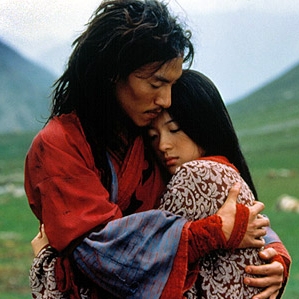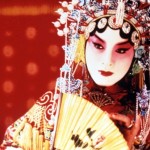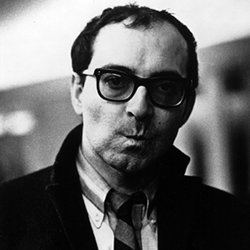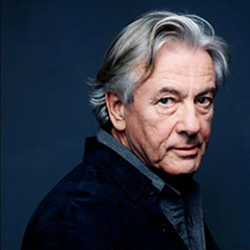
TIFF’s A Century of Chinese Cinema Review: Crouching Tiger, Hidden Dragon (2000)

Cast: Yun-Fat Chow, Michelle Yeoh, Ziyi Zhang
Director: Ang Lee
Country: Taiwan | Hong Kong | USA | China
Genre: Action | Adventure | Drama | Fantasy | Romance
Official Trailer: Here
Editor’s Notes: The following review of Crouching Tiger, Hidden Dragon is apart of our coverage for TIFF’s A Century of Chinese Cinema which runs from June 5th to August 11th at TIFF Bell Lightbox. For more information of this unprecedented film series visit http://tiff.net/century and follow TIFF on Twitter at @TIFF_NET.
Snubbed in mainland China as being too westernised, widely praised in the Western world as it’s more attainable in terms of narrative content, easily fluid compared with traditional wuxia films from the 1920’s mainland Chinese cinema. Largely defined as a period film and a martial arts epic, Crouching Tiger, Hidden Dragon took the wuxia genre to a new and larger audience in terms of global distribution. The term wuxia refers to a genre know also as the heroic genre, where narrative favours heroism and elaborate swordsmanship. Traditionalist Chinese cultural values and the mystery of legend play a part in the wuxia genre, but it’s most popular for the themes of love and loss. The characters are central to the storytelling and their emotional states are often reflected in a series of powerful sword fights. Wuxia films are usually taken from popular wuxia genre novels and the idea for the film came from a novel of the same name by Wang Du Lu. The novel was part of a trilogy and the author’s widow reportedly visited the Beijing film set during the making of the feature. There is a grand tradition in Chinese culture where elders are respected, so it’s perfect that the wife of the novel’s author was given the rights to see it being brought to life by other artists in a new form.
Largely defined as a period film and a martial arts epic, Crouching Tiger, Hidden Dragon took the wuxia genre to a new and larger audience in terms of global distribution.
Crouching Tiger, Hidden Dragon is a firm favourite in top ten lists of martial arts films and continues to rank highly in mass appeal, even for those not familiar with the wuxia genre. As far as first watch and introductions to Chinese cinema go, this is the most widely discussed and is a turning point for the curious. Anybody who has grown up admiring Chinese martial arts actors such as Bruce Lee and Jackie Chan, or has experienced martial arts in Western films such as The Karate Kid (1984) will fall in love with the skill levels involved in the choreography here. Martial arts actors are to be marvelled as strong athletes, capable of more than the final film edit can portray and although wires are used heavily throughout there is still that lingering impression of genuine power and skilful ability. Michelle Yeoh and Yun-Fat Chow are names already well versed in martial arts films, but a younger Ziyi Zhang (who has went on to a career of big heights) promises much potential as a star here. It’s often commented on how in Western cinema a fight scene breaks out due to anger and the characters are commonly portrayed as hating each other. The main difference in martial arts fight sequences is that although rivals and having a narrative reason to combat, that characters do respect each other’s technical tactics and even in admitting defeat, they have fought with their greatest strengths. It’s a whole different ball game to any Western award nominated action films that came before.
 Notably, Crouching Tiger, Hidden Dragon was at the time the highest grossing foreign language film in the USA. Rightly so for it’s viewership, it was nominated for ten Oscars in 2001 and took away the awards for Best Foreign Language Film, Best Music (Original Score), Best Art Director (Set Decoration) and Best Cinematography. The feature also won Ang Lee a Golden Globe for Best Director and brought the director into the limelight in Hollywood.
Notably, Crouching Tiger, Hidden Dragon was at the time the highest grossing foreign language film in the USA. Rightly so for it’s viewership, it was nominated for ten Oscars in 2001 and took away the awards for Best Foreign Language Film, Best Music (Original Score), Best Art Director (Set Decoration) and Best Cinematography. The feature also won Ang Lee a Golden Globe for Best Director and brought the director into the limelight in Hollywood.
Taiwanese born director Ang Lee is now a household name in cinema, but few know of his work previous to Crouching Tiger, Hidden Dragon. Lee moved to Hollywood to direct films during the Cultural Revolution under Mao’s regime in mainland China, when Chinese cultural values were strictly examined and determined within the regulations of the communist agenda. Lee is most well known for his epic narratives and recently took the title of best director at the Oscars for his work on The Life of Pi (2012) where CGI was heavily featured to make the unfilmable novel possible. There’s little Ang Lee takes on as a director that isn’t short of a challenge. His previous filmography features films that challenge traditional Chinese cultural values and have gained him attention from the global festival circuits. Crouching Tiger, Hidden Dragon was considered his greatest career achievement until recent years, and he’s a director that consistently pushes himself in creative mindset by tackling mainstream Hollywood filmmaking ideals and pursuing Chinese themes and genres.
Crouching Tiger, Hidden Dragon was considered his greatest career achievement until recent years, and he’s a director that consistently pushes himself in creative mindset by tackling mainstream Hollywood filmmaking ideals and pursuing Chinese themes and genres.

The Western title of the film sounds indeed like a Chinese philosophy quotation, and with the mention of exotic and powerful beasts ‘tiger’ and ‘dragon’ the Western viewer is immediately transported mentally to a mysterious historical landscape. Much film studies theory has been written on the oriental gaze of the Western viewer on Asian cinemas and Western preconceptions of what China is like are mostly aided by early Hollywood’s ideals on imagery and the sense of otherness and exoticism. Crouching Tiger, Hidden Dragon does play on this slightly, but in that the film is a period piece about an ancient China, there is little to contest in terms of how any viewer would look at the imagery presented without a sort of nostalgic gaze for a different place and time. Interestingly the preconceptions of heroic narratives in Western cinema often don’t allow for strong heroines to take the lead, Crouching Tiger, Hidden Dragon on the other hand embraces that possibility and flaunts the physical attributes of its actresses within the genre.
There’s plenty of comfort to be taken from the films uniqueness. Unseen like in any other wuxia film is the magical moment when the characters ascend into the tree tops and continue battle as if this occurs naturally. It’s absolutely stunning and takes a place in my film viewing memory forever. There are plenty of scenes of ethereal beauty in the landscapes and it cinematography to inspire generations of photographers to come. Crouching Tiger, Hidden Dragon will always be one of those films that are commonplace in discussions of pivotal changes in film choices, a genre specific film that transcends itself.
Crouching Tiger, Hidden Dragon will be screened at the TIFF as part of the A Century of Chinese Cinema programme under the category of Swordsmen, Gangsters and Ghosts: The Evolution of Chinese Genre Cinema. The series features eighty films, major exhibitions and special guests, running from 5th June to 11th August 2013.
Related Posts
![]()
Laura Shearer
![]()
Latest posts by Laura Shearer (see all)


























